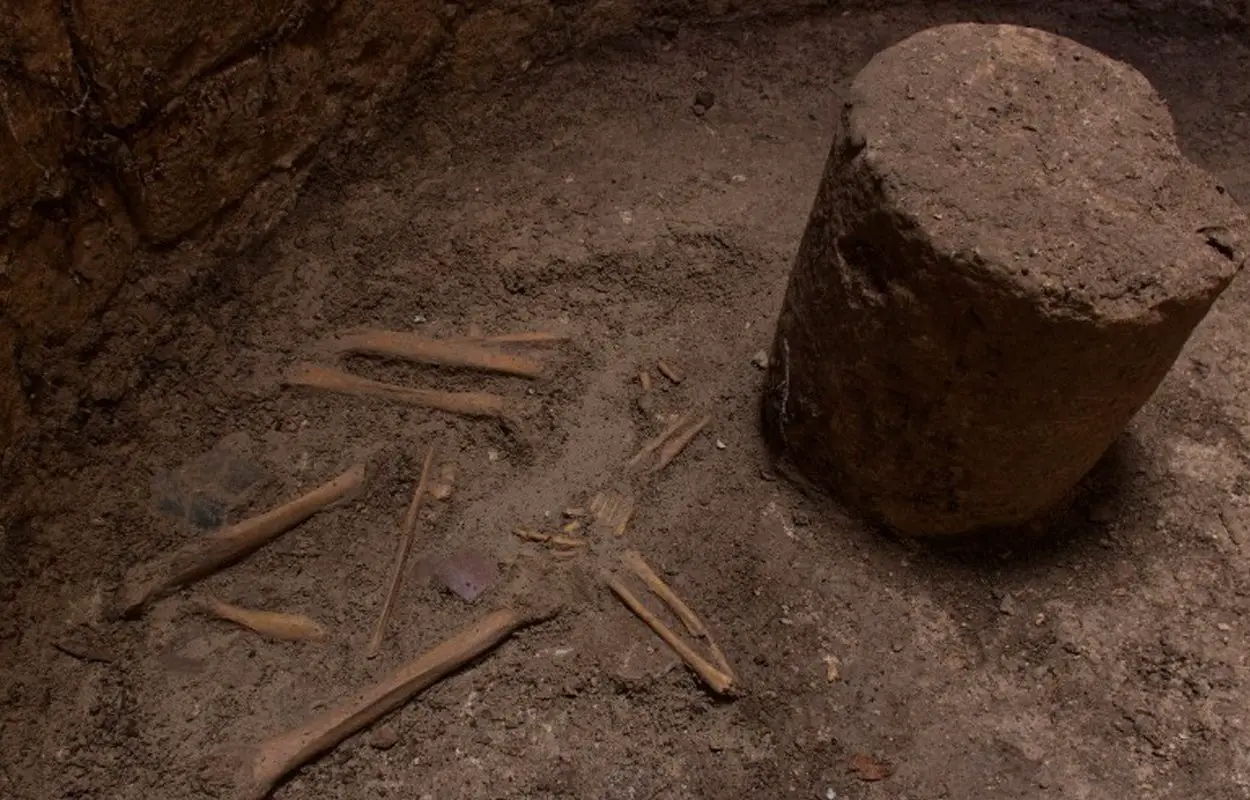Archaeologists from the National Institute of Anthropology and History (INAH) have uncovered burials within a chultun storage chamber at the Maya city of Ek’ Balam.
Ekʼ Balam was a Maya city in the municipality of Temozón, Yucatán, Mexico. The city was occupied from the Middle Preclassic through the Postclassic, although it ceased to thrive as a major centre following the Late Classic.
The city consists of pyramidal platform temples, plazas, palaces, ballcourts, and a large central Acropolis. It is theorised that the city was hastily abandoned during a period of strife and great conflict.
Recent studies at the East Elevated Plaza of the city Acropolis have led to the discovery of an elite housing enclosure containing stuccoed reliefs that represented captors and captives.
Associated with the enclosure are two artificial water tanks known as chultuns. Chultuns are bottle-shaped underground storage chambers used for storing food or water. After a chultun ended its usefulness, some were re-used for discarding refuse or for human burials.
One of the Chultuns at Ekʼ Balam was converted into a ritual space and mortuary deposit, filled with a layer of earth, rubble, and stones. Within the deposit is a cylindrical stone, fragments of pottery, and two pieces of obsidian placed as funerary offerings.
Removal of the filling layers revealed bones with no anatomical relationship, including a femur and a humerus, as well as part of a jaw and other fragments.
A second deposit of skeletal remains was also discovered, which were found placed face down on the surface of the chamber floor. An analysis of the remains suggest that they belonged to an adult female of an advanced age.
Header Image Credit : INAH





